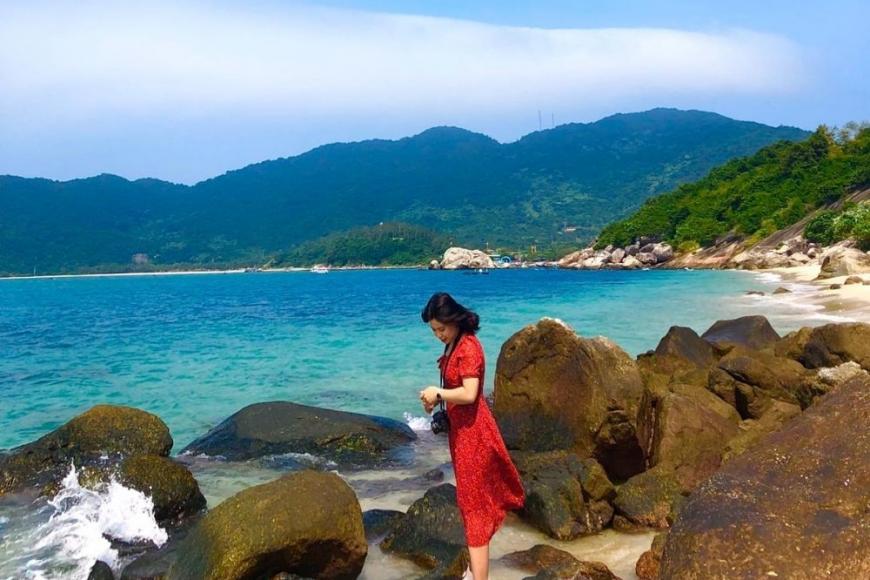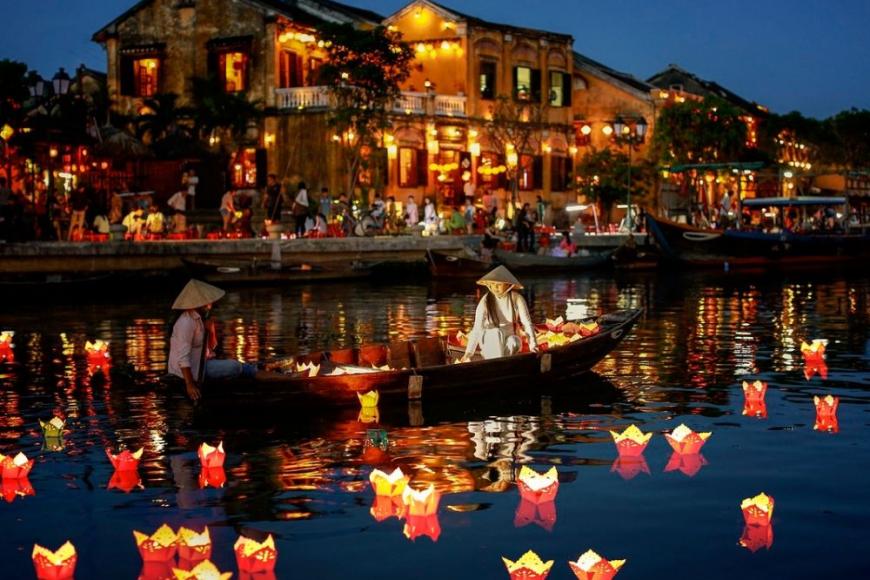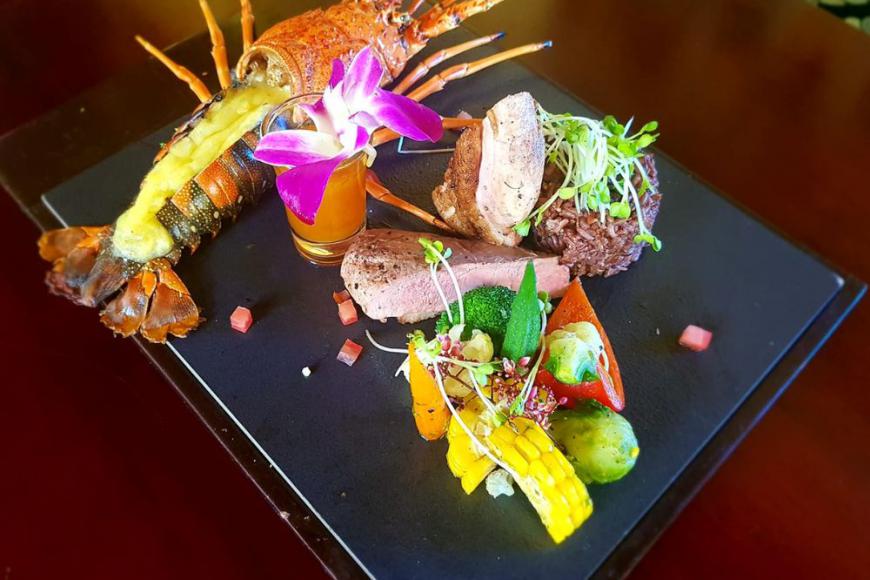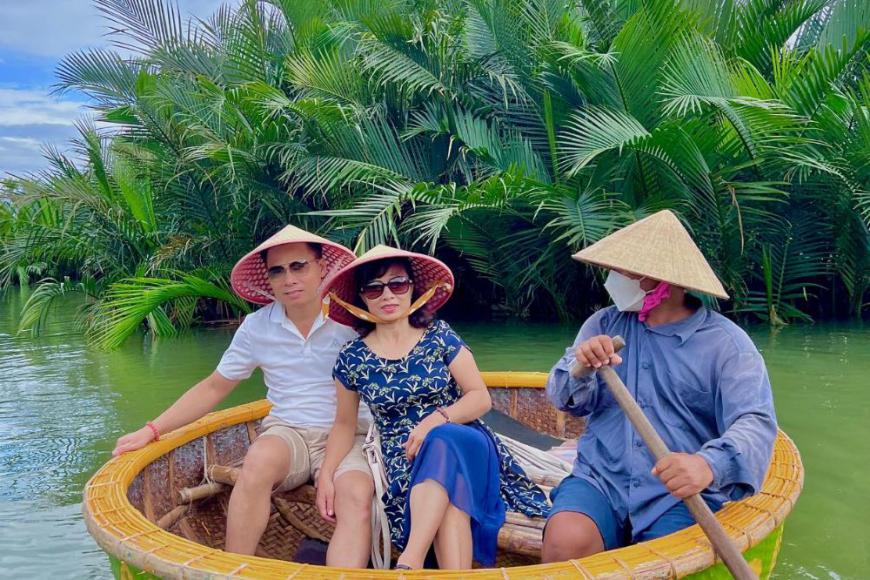- Nha Trang Travel Information
- Muine Travel Information
- Hue Travel information
- Cantho travel information
- Sapa travel information
- Ha Giang Travel Guide
- Ninh Binh Travel Information
- Quy Nhon Travel Information
- Vietnam Travel Information
- Hoian Travel Guide
- Vung Tau Travel Information
- Quang Binh Travel Information
- Phu Quoc Travel Information
- Ha Tinh Information
- Ca Mau information
- Quang Ninh Travel Information
- Tay Ninh Travel information
- Hoian travel guide
- Tien Giang travel guide
- Con Dao Travel information
- Ninh Thuan information
- Moc Chau information
- Danang Vietnam Travel Information
- Hanoi Travel Information
- Ho Chi Minh Travel Information
- Dalat Travel Information
Japanese Bridge Hoian, Vietnam
A feature of the tourism industry in Hoisn is the Japanese Bridge Hoian, known for its peaceful ambiance. This location has witnessed the progression of history, which a multitude of events and crossroads have marked. This may be why this location has developed into a perfect place to stop and is visited by hundreds of people each year.
Japanese Bridge in Hoian Overview
- Location: Tran Phu street and Nguyen Thi Minh Khai street, Hoian, Quang Nam ( crossing the romantic Hoai River)
- Entrance fee: Free
One of the most popular destinations for travelers visiting Hoian is the Japanese Bridge Hoian, which is situated in the heart of the historic town and spans the Hoai River, known for its beautiful atmosphere. It is comparable to a connecting component that can link the past, present, and future.
The Japanese Bridge in Hoian is a stunning historical structure that successfully combines Japan and Vietnam's many architectural styles and cultural traditions. Lai Vien Kieu, Cau Pagoda, and Japanese Covered Bridge are some of the other names for this structure.
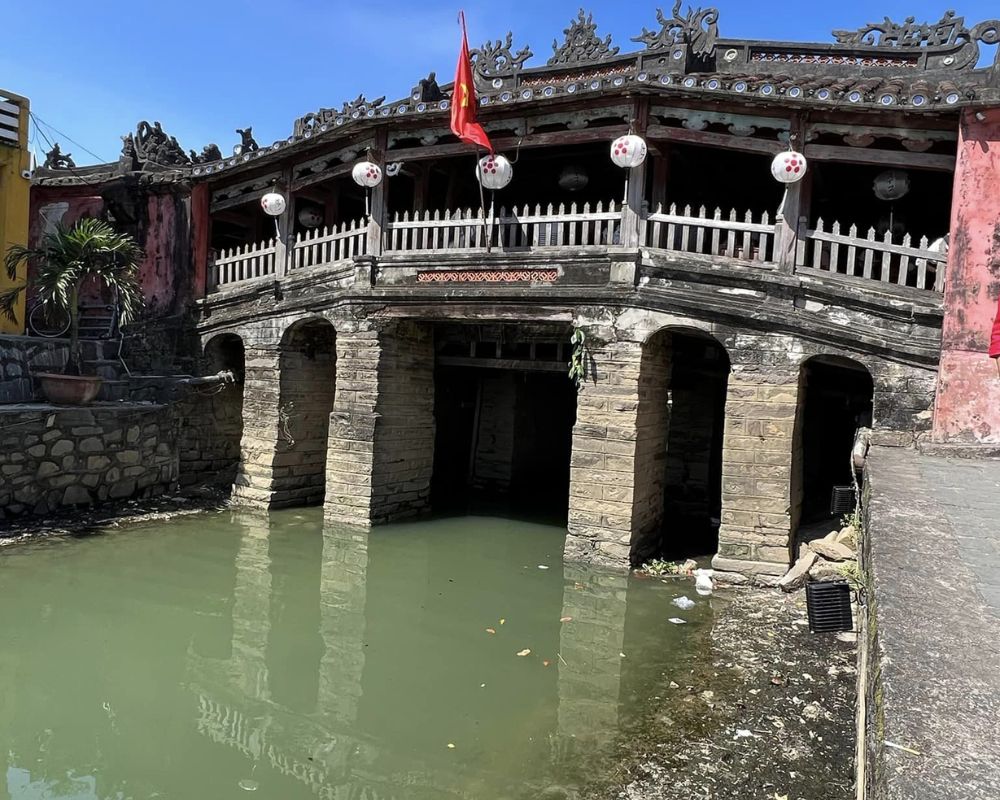 Japanese Bridge in Hoian
Japanese Bridge in HoianIn addition to being a tourist attraction and a well-designed structure, the Japanese Bridge in Hoian is a well-known symbol of the Hoian Ancient Town. It has the distinction of being printed on the currency that is worth 20,000 VND
History of Japanese Bridge Hoian
The Japanese Bridge Hoian was constructed by Japanese traders around the 17th century. The work was described as similar to a blade used to puncture the rear of the monster Namazu. As a result, the beast could not wag its tail to unleash an earthquake. In the aftermath of that, people constructed a pagoda beside the bridge's railing; hence, it is also known as the Cau Pagoda (the word Cau from Vietnamese means bridge).
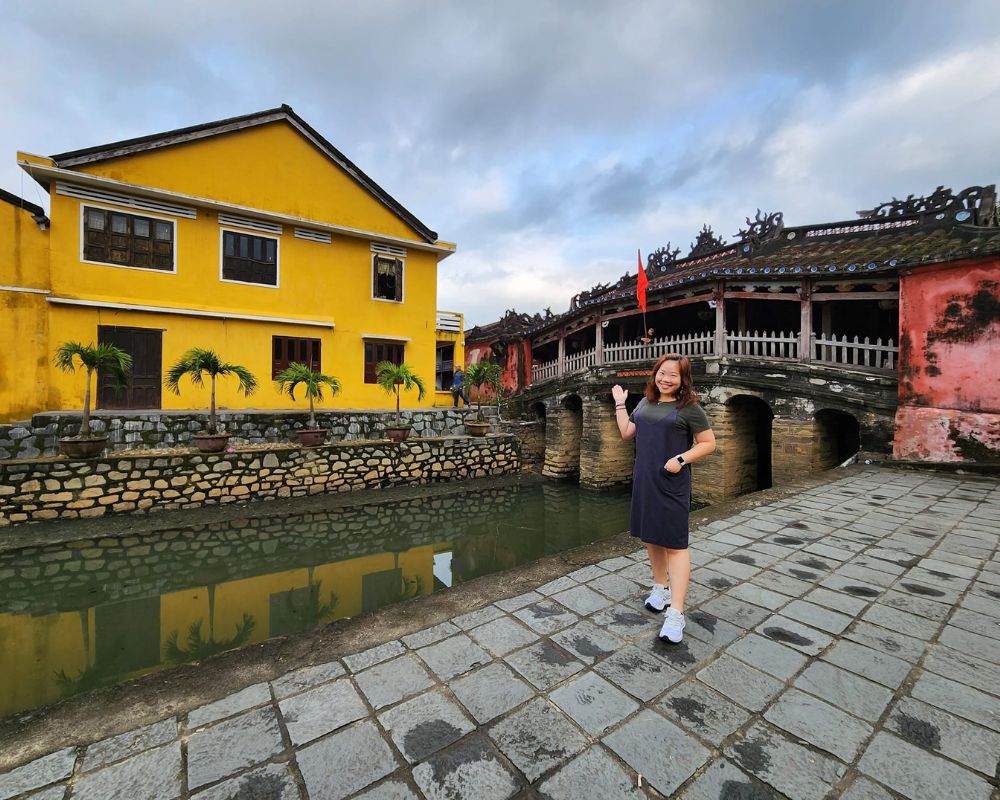 Japanese Bridge Hoian was built in the 17th century
Japanese Bridge Hoian was built in the 17th centuryIt was during his visit to Hoian in 1719 that Lord Nguyen Phuc Chau bestowed upon the bridge the name Lai Vien Kieu, which translates to "visitor-welcoming bridge." This work was reconstructed in 1817, as indicated by the age of the roof beam and the epitaph located at the entrance to the bridge. At this time, the pagoda that was situated on it was most likely also rebuilt. After thereafter, the pagoda had renovations in 1817, 1865, 1915, and 1986, respectively. As a result, the Japanese characteristics of the pagoda progressively disappeared, and they were replaced by architecture in the styles of Vietnam and China. The bridge was bestowed with the title of National Historical and Cultural Relic of Vietnam on the 17th of December, 1990.
Architecture of the Japanese Bridge
Most of the bridge and the top were created out of red lacquered wood, while the base was made of stone. Even though it is generally referred to as the "Japanese Bridge," the architecture is an innovative combination of Vietnamese, Japanese, and Chinese culture. This can be seen in everything from the structural elements to the patterns and embellishments.
With its breathtakingly curving roof extending over every inch of the bridge, the bridge is a perfect example of Japanese architecture. Yin and yang designs, which are emblematic of Vietnamese culture and architecture, were used to embellish the roof of the building.
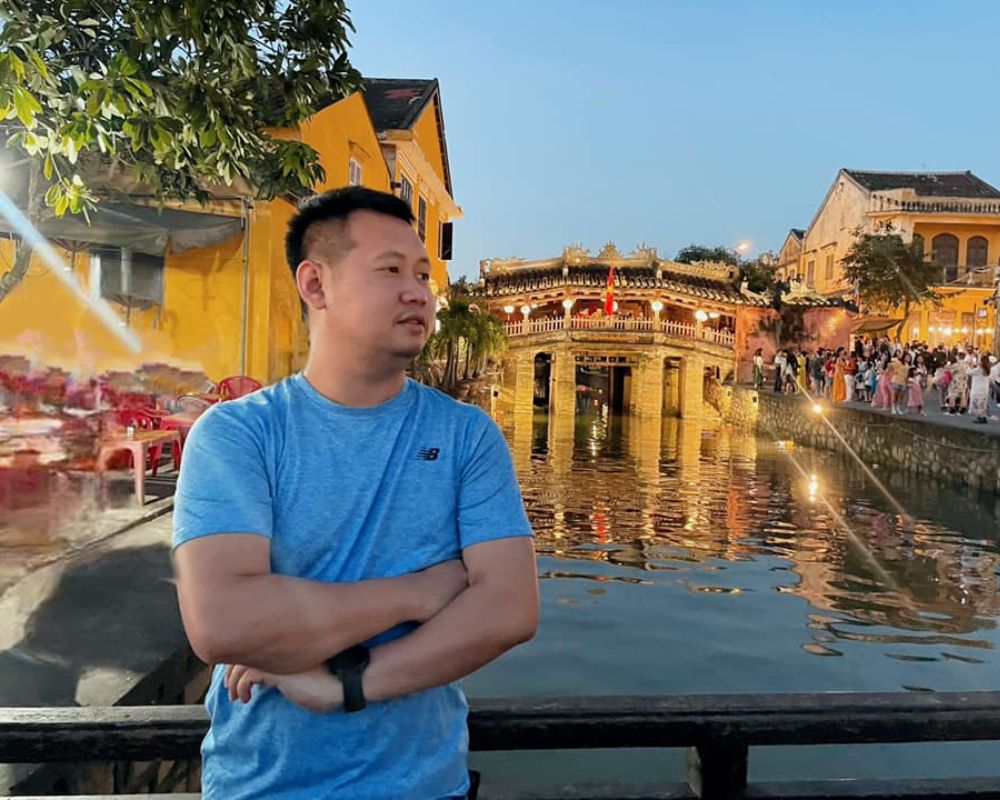 A man taking a photo in Japanese Bridge
A man taking a photo in Japanese BridgeEach side of the bridge features a series of benches and narrow corridors that allow visitors to unwind and breathe fresh air. A slender wooden wall serves as the barrier that separates the temple from the bridge.
There is a dog and a monkey, respectively, at the entrance and departure of the bridge. The dog is located at the gate. Because they are considered symbols of protection and safety in Japanese culture, they are considered guardians of the bridge. The construction of these two sculptures is claimed to have begun in the year of the Monkey and it was completed in the year of the Dog. This is another thing that is said to have happened.
Impressions of the Japanese Bridge Hoian
Japanese influences are visible in its design.
Approximately 18 meters in length, the Japanese Bridge Hoian is supported by brick and stone piers and crafted entirely of wood. Yin and yang tiles adorn the pagoda's roof. A big sign bearing the three Chinese characters, Lai Vien Kieu, is displayed on the front door. The pagoda and bridge are adorned with intricate carvings and constructed of wood. Two wooden sculptures of animals flank the bridge. One depicts a monkey, and the other a dog. According to Japanese mythology, these two deities encode the monster Namazu.
There is no Buddha worship in the temple.
Even though the Japanese Bridge Hoian is essentially a pagoda, it is intended to worship Tran Vu rather than Buddha. This deity guards the land, ensures that storms and floods are under control, and brings joy and happiness to the people. Since this is the case, not only the inhabitants of Hoian but also tourists from all over the world visit this location annually to take in the breathtaking environment and discover inner tranquility.
Its image can be found on the VND 20,000 polymer banknote.
On the reverse side of the VND 20,000 bill, which is constructed of polymer plastic paper, the logo of the Japanese Bridge Hoian is displayed. 2006 was the year that the bill was issued, and it is still in effect today. This demonstrates the significance of the bridge in the spiritual life and the everyday life of the people of Hoian.
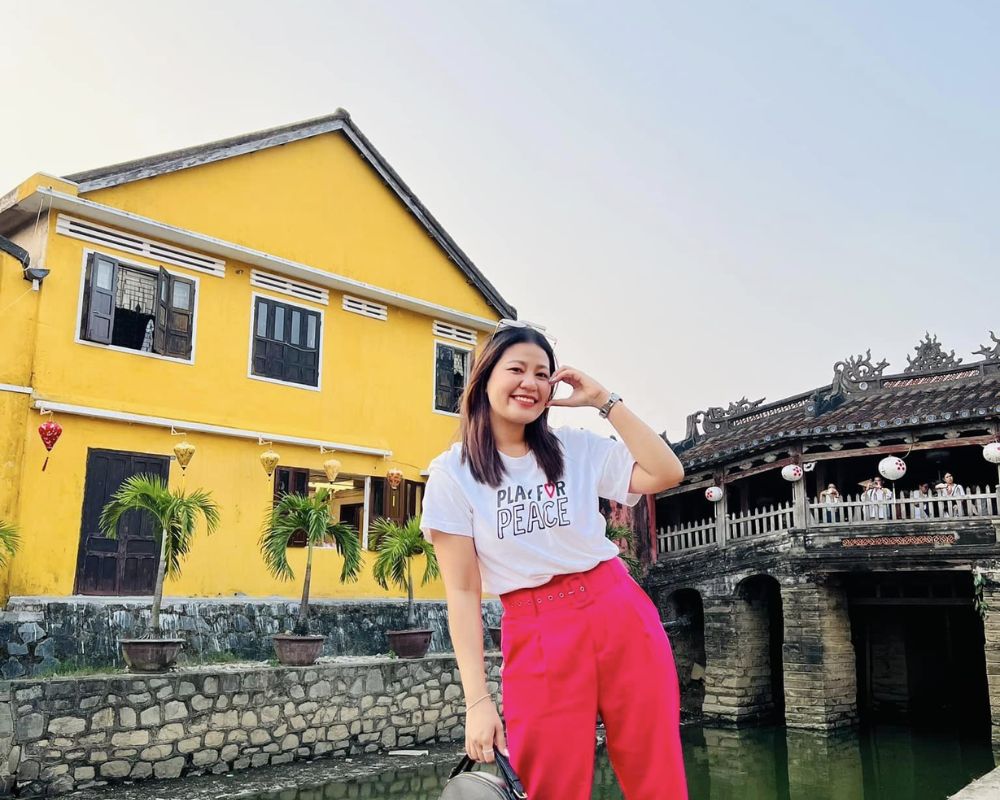 Japanese Bridge Hoi An is printed on the 20,000 VND banknote
Japanese Bridge Hoi An is printed on the 20,000 VND banknoteSome well-known tourist destinations close to the Japanese Bridge
Thanh Ha Pottery Village
The Thanh Ha Pottery Village is located around three kilometers west of Hoi An's city center. This tourist spot is located close from the Japanese Bridge in Hoi An, and it is ideal for people interested in experiencing the age-old culture of Vietnam. This is not only a town for making crafts, but it is also a "living museum" that houses one-of-a-kind and priceless records related to the traditional beauty of Hoi An and the craft of pottery making.
Hoian Market
In addition to being well-known for its varied and abundant cuisine, Hoian Market is also a popular destination for individuals who enjoy snapping photographs. The market offers diverse goods, including vegetables, spices, souvenirs, and other items. Tourists can go sightseeing, indulge in the local cuisine, and shop for presents for their loved ones and friends.
Tips for traveling to Japanese Bridge Hoian
- During the hours of 9:00 a.m. to 3:00 p.m., when there are fewer people around, the monument is at its most attractive.
- Every day from 7h00 to 8h00 in the evening, visitors to Hoi An can participate in folk games and witness street performances in Old Town. This is in addition to the opportunity to explore the Japanese Bridge.
- A nighttime voyage in a bamboo boat down the canal is something that visitors are highly recommended to enjoy. In Hoian, you can sense every little detail because of the brilliant lighting, the colorful environment, and the nostalgic atmosphere.
- To get the most out of their trip, tourists should engage a tour guide. Additionally, the tour guides will provide you with information regarding the precise location of the bridge, as well as the history of the bridge and the unique architecture that it possesses.
At least once in your life, you should make it a point to travel to Japanese Bridge Hoian because it is a well-known destination. Through your visit, you will be able to expand your knowledge of history and experience the nostalgic aspects that are present amid the hustle and bustle of everyday life. Because of this, we will value our national culture and the things we have now more than ever.
>>> See more: TOP THINGS TO DO IN HOIAN, VIETNAM
other
Cu Lao Cham island is a famous place with its wonderful sand beaches, a nature reserve and beautiful sea. This place is an ideal spot for camping, swimming and scuba. If you are planning to go to Vietnam on your vacation, don’t miss out on the stunning island.
Although it is surrounded Hoian by Vietnamese restaurants, tourists can enjoy Indian dishes when coming there. Indian cuisine attracts many visitors due to its ingredients, recipes and spices. If you want to seek an Indian restaurant in Hoian, refer to the top 8 best Indian restaurants in Hoian below.
Hoian lantern festival is an event held every full moon, attracting many tourists to visit and enjoy. There are a lot of colorful lanterns which are lit and covered on the streets and in the water. This lantern festival is a celebration of Vietnamese culture and a wonderful experience for travellers visiting Hoian town.
Hoian Ancient Town is one of the best destinations in Vietnam. This place offers a wide range of attractions with breaking landscapes, unique culture, and friendly locals. Besides, Hoi An is well-known for its diverse and rich cuisines.
If you are traveling in Hoian and need to figure out what & where to eat in Hoian, this guide will provide the top best restaurants in Hoian in below.

